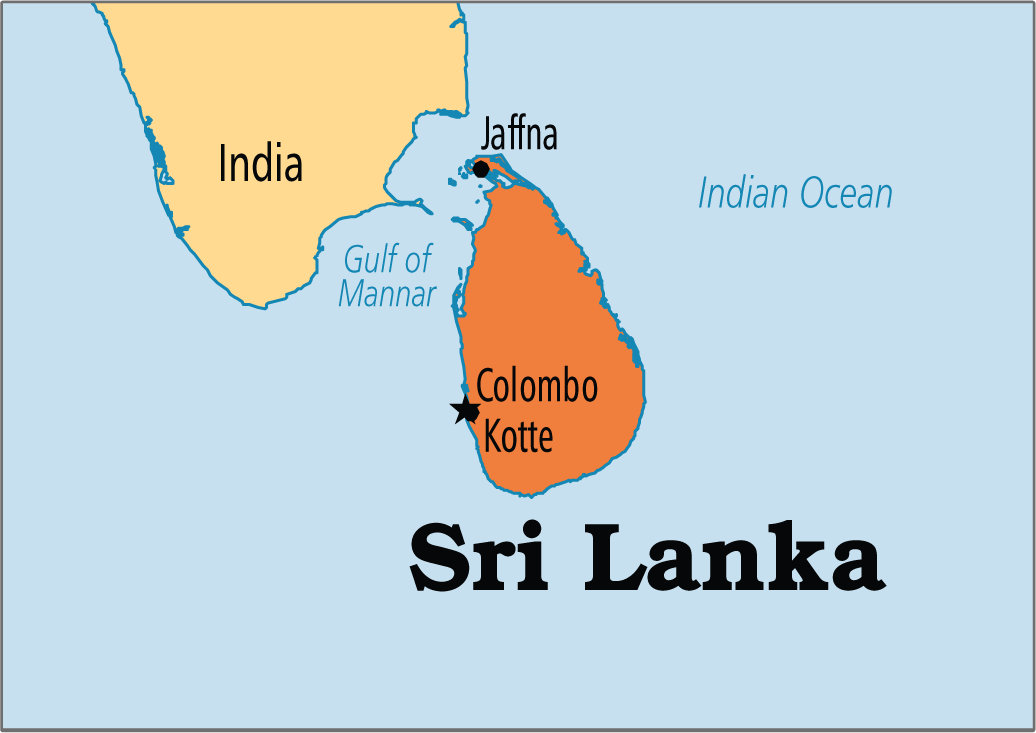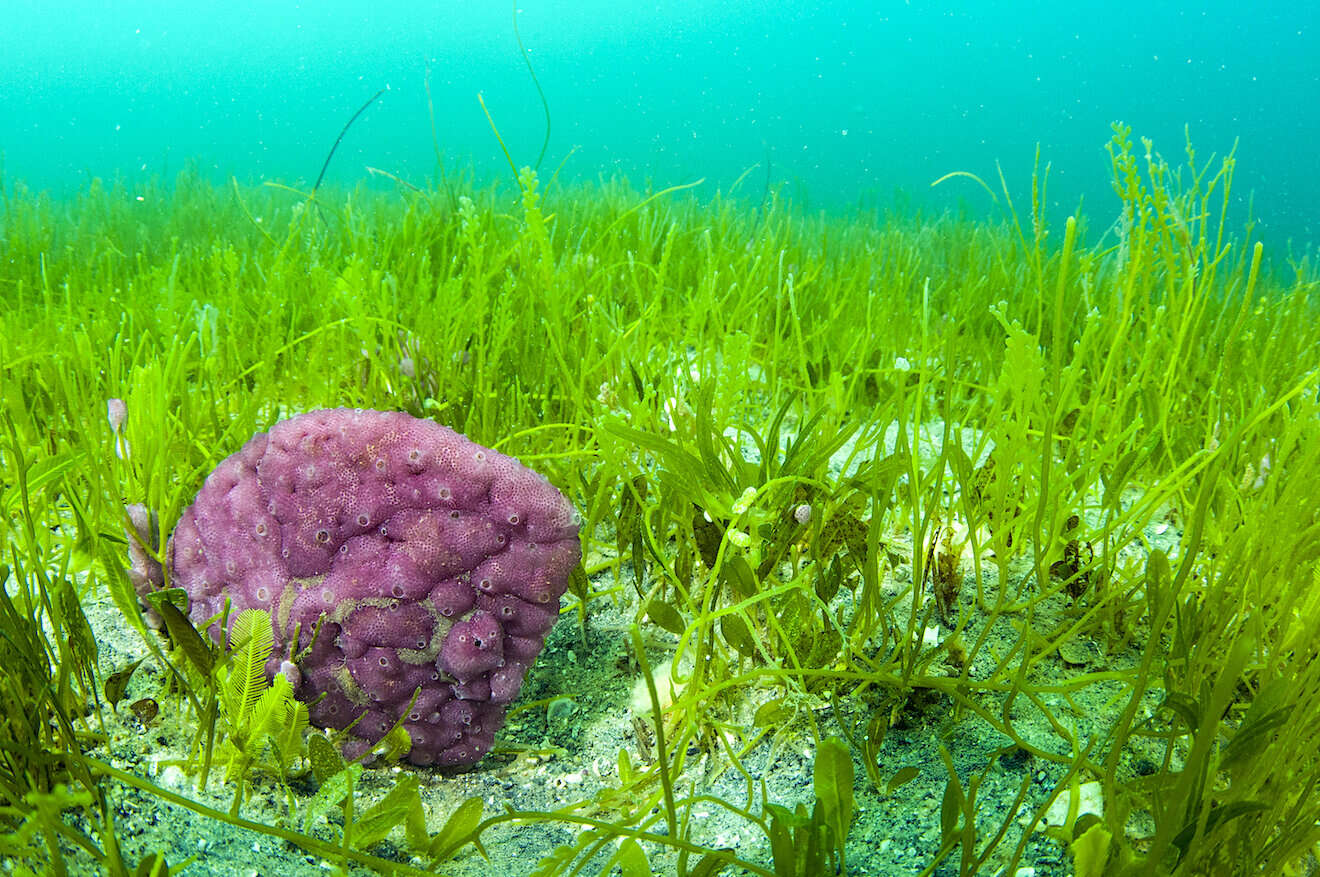Biodiversity & Environment
Seagrass
- 24 Oct 2020
- 6 min read
Why in News
Recently, the restoration process of seagrasses has been taken up by Tamil Nadu in the Gulf of Mannar.
 Key Points
Key Points
- Seagrasses:
- These are flowering plants that grow submerged in shallow marine waters like bays and lagoons.
- These have tiny flowers and strap-like or oval leaves.
- Evolution:
- Terrestrial plants evolved about 850 million years ago from a group of green algae and seagrasses evolved from terrestrial plants that recolonised the ocean 70-100 million years ago.
- Food Production:
- Like terrestrial plants, seagrasses also require sunlight for photosynthesis from which these manufacture their own food and release oxygen.
- Reproduction:
- Sexual Reproduction Method: The pollen from the flower of the male plant is transferred to the ovary of the female flower through this method.
- This is known as submarine pollination. Most species undergo this process and complete their life cycle underwater.
- Asexual Reproduction Method: Seagrasses can also reproduce asexually by branching off at their rhizomes (modified subterranean plant stem that sends out roots and shoots from its nodes).
- Because of this character, they can recover after being cut by grazers or disturbed by storms.
- Sexual Reproduction Method: The pollen from the flower of the male plant is transferred to the ovary of the female flower through this method.
- Order and Species:
- There are 60 species belonging to four families in the order Alismatales.
- Some of the important seagrasses are Sea Cow Grass (Cymodocea serrulata), Thready Seagrass (Cymodocea rotundata), Needle Seagrass (Syringodium isoetifolium), Flat-tipped Seagrass (Halodule uninervis), etc.
- Habitat:
- Though seagrasses inhabit all types of substratas (layers) from mud to rock, the lush green seagrass beds are found extensively in muddy and sandy substratas.
- These occur all along the coastal areas of India and are abundant in the Palk Strait and Gulf of Mannar in Tamil Nadu.
- Significance:
- Seagrasses are considered ‘Ecosystem Engineers’ as they are known for providing many ecosystem services and are also called ‘the lungs of the sea’ as they release oxygen into the water through photosynthesis.
- Sequesters up to 11% of the organic carbon buried in the ocean even though they occupy only 0.1% of the ocean floor and absorb 83 million tonnes of carbon from the atmosphere annually.
- Seagrasses can capture carbon from the atmosphere up to 35 times faster than tropical rainforests.
- Help maintain water quality by trapping fine sediments and suspended particles in the water column and increase water clarity.
- Filter nutrients released from land-based industries before they reach sensitive habitats like coral reefs.
- Prevent soil erosion as the extensive vertical and horizontal root systems of seagrasses stabilise the sea bottom.
- Provide food as well as habitat for fishes, octopuses, shrimp, blue crabs, oysters, etc.
- Endangered marine organisms like dugong (Sea Cow), green turtle, etc, graze directly on seagrass leaves.
- Bottle-nosed dolphins feed on the organisms that live in seagrass areas.
- Detritus (natural waste) of decomposed dead seagrass supplies food for worms, sea cucumbers, crabs, etc.
- After decomposition, it releases nutrients like nitrogen and phosphorus which are absorbed by seagrasses and phytoplankton.
- Protect juvenile and small adult fish from large predators and also protect worms, crabs, starfishes, sea cucumbers, sea urchins, etc, from strong currents.
- Provide ideal nursery sites for important commercial marine life like squids and cuttlefish.
- Threats:
- Seagrass beds are facing decline all over the world at the rate of 2-5% annually.
- Around 30,000 square kilometres of seagrass has been lost during recent decades at a global level.
- These face natural disturbances like grazing, storms, ice-scouring (abrasion and erosion of seabeds by glaciers.) and desiccation (extreme dryness).
- Human disturbances like eutrophication, mechanical destruction of habitat, overfishing, release of nutrients, coastal engineering construction, pollution, etc are destructive for them.
- Seagrass beds are facing decline all over the world at the rate of 2-5% annually.
Way Forward
- If seagrass habitats are lost, the marine organisms that depend on them for their survival may also face extinction, resulting in the loss of marine ecosystem productivity.
- Protection and restoration should be attempted at a global level as it can play a significant role in mitigating climate change.
- There is an urgent need to take earnest measures to conserve seagrasses and their habitats. For that, the International Union for the Conservation of Nature (IUCN) should intervene immediately and study the status of the different seagrass species before they become extinct.






